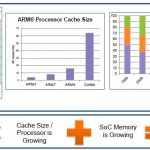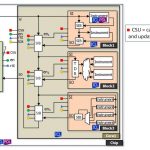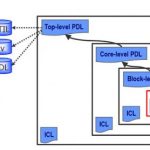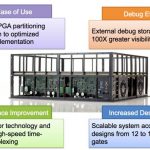Matt Elmore has a two-part blog about the growing complexity of signal integrity analysis, both on the chip itself and the increasingly complex analysis required to make sure that signals (and power) get in and out of the chip from the board cleanly, especially to memory, which requires simultaneous analysis of chip-package-system… Read More
Tag: eda
EDS Fair: Dateline Yohohama
Electronic Design and Solutions Fair (EDSF) was held in Yokohama Japan from Wednesday to Friday last week. It was held at the Pacifico Hotel, somewhere I have stayed several times, not far from the Yokohama branch of Hard Rock Cafe and, what used to be at least, the biggest ferris-wheel in the world.
Atrenta was one of the many companies… Read More
How much SRAM proportion could be integrated in SoC at 20 nm and below?
Once upon a time, ASIC designers were integrating memories in their design (using a memory compiler being part of the design tools provided by the ASIC vendor), then they had to make the memory observable, controllable… and start developing the test program for the function, not a very enthusiastic task (“AAAA” and “5555” and other… Read More
Is The Fabless Semiconductor Ecosystem at Risk?
Ever since the failed Intel PR stunt where Mark Bohr suggested that the fabless semiconductor ecosystem was collapsing I have been researching and writing about it. The results will be a book co-authored by Paul McLellan. You may have noticed the “Brief History of” blogs on SemiWiki which basically outline the book. If not, start… Read More
Mentor and NXP Demonstrate that IJTAG Can Reduce Test Setup Time for Complex SoCs
The creation of test patterns for mixed signal IP has been, to a large extent, a manual effort. To improve the process used to test, access, and control embedded IP, a new IEEE P1687 standard is being defined by a broad coalition of IP vendors, IP users, major ATE companies, and all three major EDA vendors. This new standard, also called… Read More
Creating Plug-and-Play IP Networks in Large SoCs with IEEE P1687 (IJTAG)
Until now, the integration and testing of IP blocks used in large SOCs has been a manual, time consuming design effort. A new standard called IEEE P1687 (or “IJTAG”) for IP plug-and-play integration is emerging to simplify these tasks. EDA tools are also emerging to support the new standard. Last week mentor announcedTessent IJTAG,… Read More
Jasper User Group Keynotes
I attended the Jasper User Group this week, at least the keynotes, the first by Kathryn Kranen the CEO of Jasper and the second by Bob Bentley of Intel.
Kathryn went over some history, going back to when the company was started (under the name Tempus Fugit) back in August 2002 with a single product for protocol verification. Now, since… Read More
Analog FastSPICE AMS — Simple, Fast, nm-Accurate Mixed-Signal Verification
Verification and AMS are top search terms on SemiWiki so clearly designers have a pressing need for fast and accurate verification of today’s mixed-signal SoCs that include massive digital blocks and precision analog/RF circuits. They need simulation performance to verify the mixed-signal functionality, and they need nanometer… Read More
Next Generation FPGA Prototyping
One technology that has quietly gone mainstream in semiconductor design is FPGA prototyping. That is, using an FPGA version of the design to run extensive verification. There are two approaches to doing this. The first way is simply to build an prototype board, buy some FPGAs from Xilinx or Altera and do everything yourself. The… Read More
Why are AMS designers turned off by Behavioral Modeling?
Analog Mixed-Signal (AMS) behavioral models have not caught on with the AMS designer community. Why? I suspect a significant reason (but certainly not the only one) is the way they are presented.
First, what is AMS behavioral modeling?
I define it as “a set of user-defined equations that decribe the terminal behavior of a component”.… Read More











